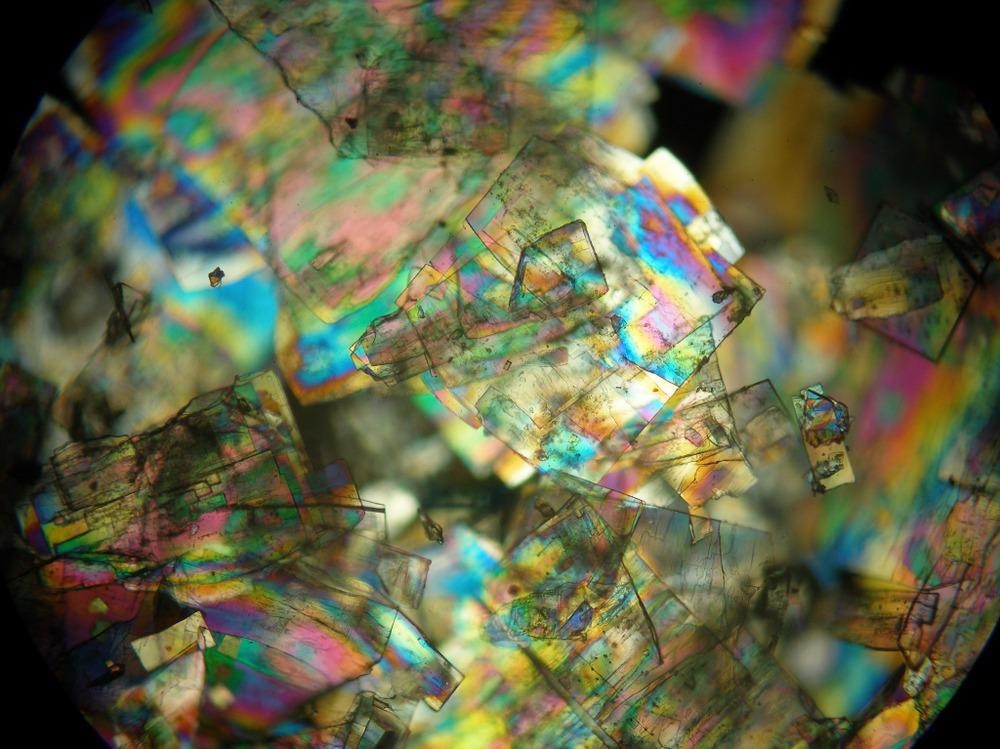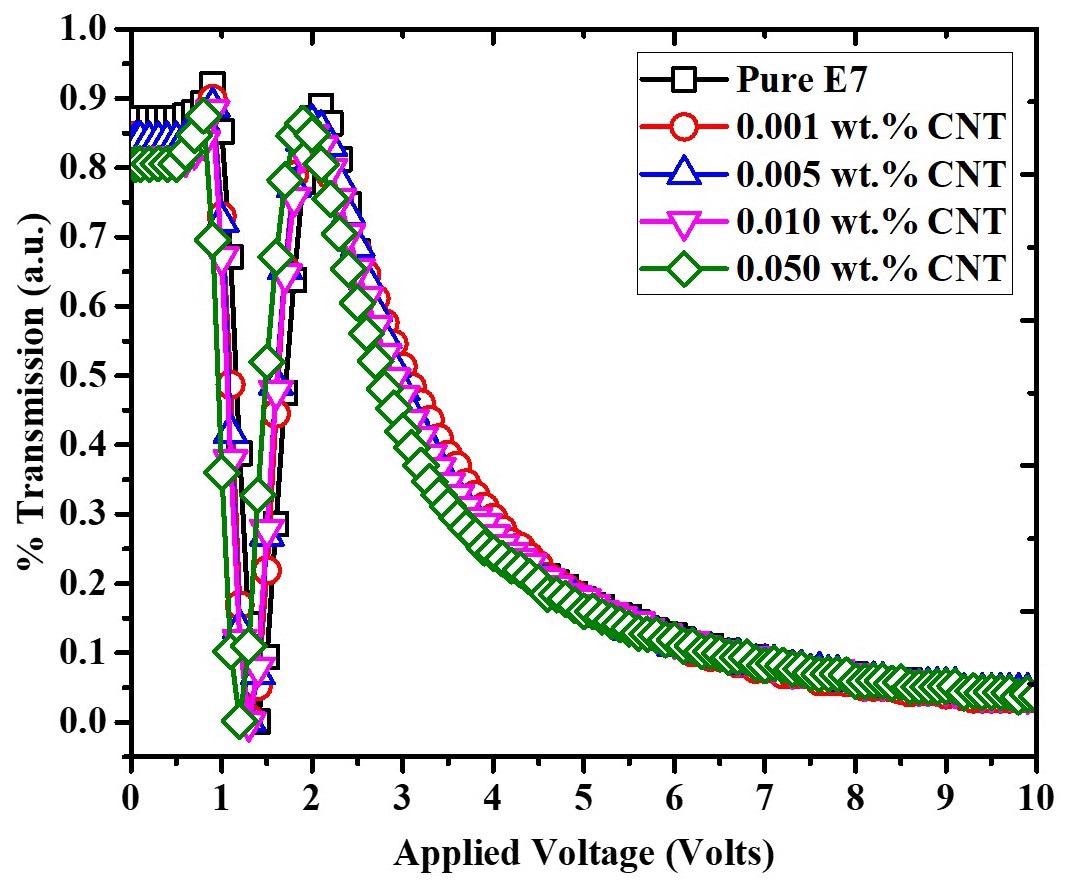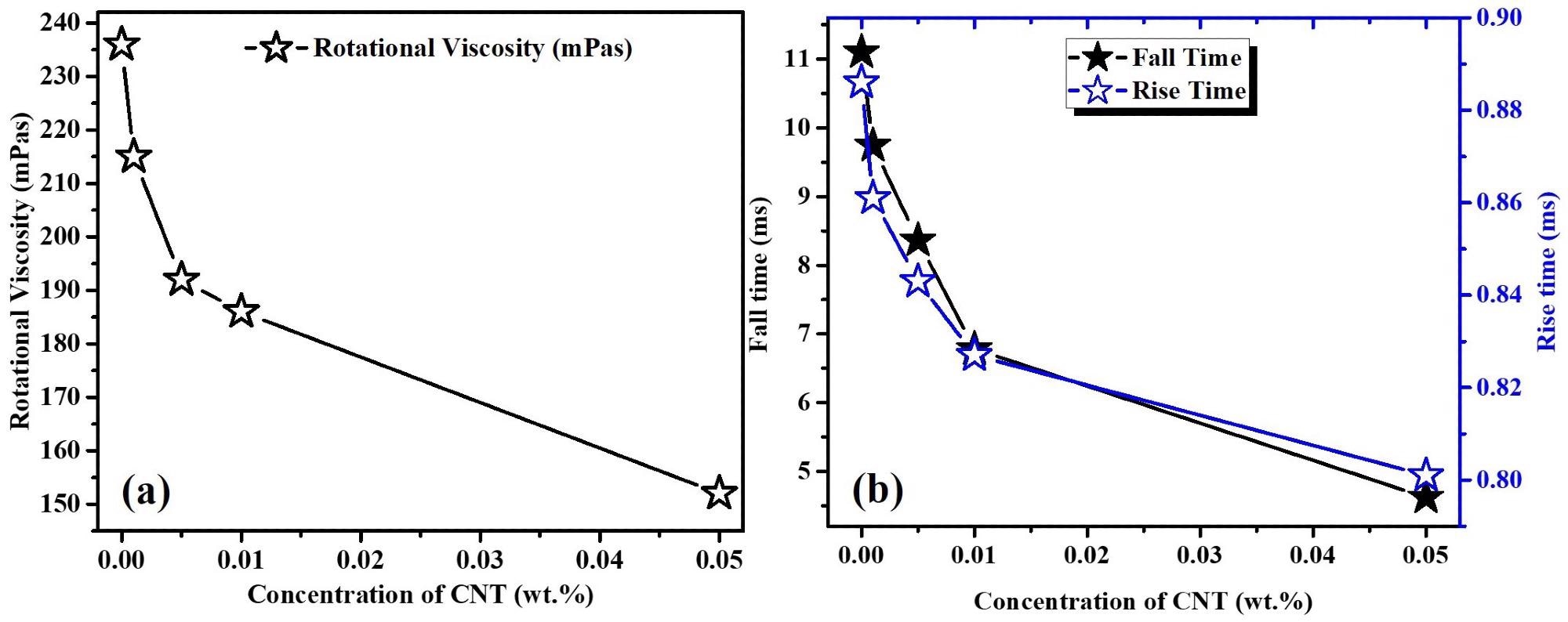.jpg) By Susha Cheriyedath, M.Sc.Reviewed by Skyla BailyNov 12 2021
By Susha Cheriyedath, M.Sc.Reviewed by Skyla BailyNov 12 2021A group of researchers have recently investigated small amounts of well-dispersed multi-walled carbon nanotubes (MWCNTs) in a nematic liquid crystal mixture called E7 and found that MWCNTs enhanced the dielectric and electro-optical properties of E7 by 60%. The research was published in the journal Electronic Materials.

Study: Carbon Nanotubes Blended Nematic Liquid Crystal for Display and Electro-Optical Applications. Image Credit: Ad Gr/Shutterstock.com
What are Liquid Crystals?
Liquid crystals (LCs) are a key component of modern electronic displays and electro-responsive optical devices. They are nano-size solid crystals which in bulk exhibit wave-like characteristics similar to a liquid, because of their shape.
Unlike an isotropic liquid, LCs have some degree of order and behave anisotropically. Isotropic properties are those which are independent of the direction and orientation of the constituents of the matter, whereas anisotropic properties are outcomes of direction and orientation of the same.
There are several types of liquid crystals, but thermotropic LCs are ideal for electro-optical devices because of their temperature sensitivity. In this case, an electric field is used to keep the liquid crystals in an ideal temperature range so that all of them align in a particular direction.
Light passing through these aligned crystals gives a polarized display. Nematic LCs like E7 is the most common subcategory of thermotropic LCs.
![(a) represents the wt% constituents of the different monomers in the E7 LC mixture; whereas, (b) depicts the schematic of top and front views of MWCNTs (designed via Avogadro software [34]).](https://www.azom.com/images/news/ImageForNews_57294_16367176281626704.jpg)
(a) represents the wt% constituents of the different monomers in the E7 LC mixture; whereas, (b) depicts the schematic of top and front views of MWCNTs (designed via Avogadro software. Image Credit: Singh, B.P., et al., Electronic Materials
What are Multi-Walled Carbon Nanotubes?
Carbon nanotubes (CNTs) are cylindrical-shaped hexagonal arrangements of carbon atoms that look like a rolled-up sheet of graphene. A single tube CNT is called single-walled carbon nanotubes (SWCNT), whereas concentric multiple CNTs are known as multi-walled carbon nanotubes (MWCNTs).
Van der Waal's electrostatic force in-between each layer of MWCNT gives it a more robust structure than SWCNT. CNTs are known for their high electrical conductivity, strength, elasticity, thermal conductivity, electron field emission, and aspect ratios. The mixing of carbon nanotubes with different polymers and other engineering materials has shown a significant amalgamation of properties.
What Did the Study Find?
The researchers mixed a small amount of MWCNTs into the nematic LC - E7, in various concentrations ranging between 0.001 to 0.05 wt%. Then, the electro-optical and dielectric properties were studied inside homogenously and vertically aligned Indium Tin Oxide (ITO) cells. ITO is a transparent electron-conducting metal oxide that is used in most electronic display devices.

Variation of transmittance as a function of applied voltage (V-T curves) of the pristine E7 LC and its composites with different concentrations of MWCNTs at room temperature (RT). Image Credit: Singh, B.P., et al., Electronic Materials
Polarized optical micrographs (POMs) of the blend confirmed the homogeneous mixing of both materials and assured no color shifts in LC cells, i.e. intensity and luminescence remained the same even with the increase in MWCNTs concentrations. The threshold voltage (minimum voltage at which the LCs start to self-align) and the operating voltage were mostly unaffected.
However, the refractive index and the transmission of the light were slightly compromised due to the scattering of light from the walls of MWCNTs.
Additionally, the ionic concentration, diffusion constant, DC conductivity, and mobility of ions of the pure and MWCNT-doped nematic LC were measured.
It showed a strong dipole-dipole interaction indicating the formation of a π-π bond, i.e Van der Waal’s force of attraction between phenyl parts of the LC and carbon ring of MWCNTs, thus increasing in dielectric anisotropy and homogeneous dispersion of MWCNTs in LC below the concentration of 0.05 wt%. However, a higher concentration causes MWCNTs to agglomerate, which is the optimum concentration value that increases with the use of more polar liquid crystals.
The researchers also found that at an optimal concentration, MWCNTs act like barricades for ionic impurities and reduce them by up to 34.3% via the ion trapping mechanism. The free energy of the MWCNT-LC composite is minimized when the MWCNTs align along with the director of E7 LC.
The reduced ion concentration and absence of externally applied voltage suppress the image-sticking resulting in a faster relaxation process. This enhances the elastic constant, second-order orientational order parameter, and birefringence factor of the mixture, which in turn reduces rotational viscosity and increases nematic-isotropic transition temperature.
Reduction in rotational viscosity of the mixture ensures a faster response to the self-alignment of liquid crystals when an electric field is applied.

(a) Variation of rotational viscosity and (b) dynamic response of the pure E7 with different MWCNTs concentration. Image Credit: Singh, B.P., et al., Electronic Materials
The nematic-isotropic transition temperature is the maximum temperature above which nematic liquid crystals lose their anisotropic properties and behave like a common isotropic liquid. Thus, an increase in nematic-isotropic transition temperature is desirable for a durable and long operating temperature range of liquid crystals.
Future research in electro-optical display technology should focus on a more versatile, responsive, durable, and highly transmissive liquid crystal.
Reference
Singh, B.P., et al. Carbon Nanotubes Blended Nematic Liquid Crystal for Display and Electro-Optical Applications. Electron. Mater. 2021, 2(4), 466-481. https://www.mdpi.com/2673-3978/2/4/32
Disclaimer: The views expressed here are those of the author expressed in their private capacity and do not necessarily represent the views of AZoM.com Limited T/A AZoNetwork the owner and operator of this website. This disclaimer forms part of the Terms and conditions of use of this website.